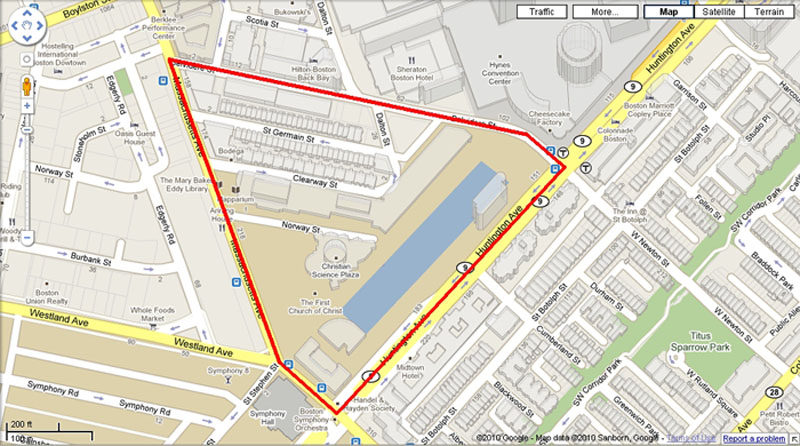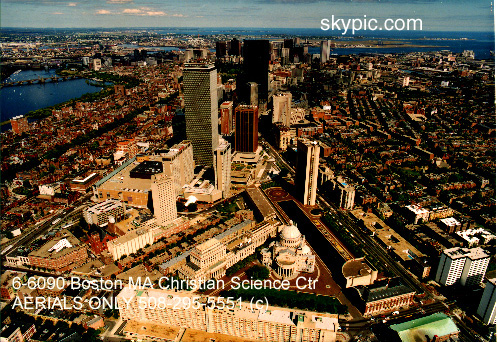 Site boundaries (Massachusetts Avenue, Huntington Avenue, Belvidere Street) |
The site that I have chosen for observation lies in the city of Boston between the Back Bay and the South End neighborhoods. It is a triangular-shaped area bordered by Huntington Avenue, Massachusetts Avenue and Belvidere Street, and encompasses St. Germain Street, Clearway Street, Norway Street and Dalton Street. This site includes a variety of land uses such as residential, commercial, institutional and recreational. In Kevin Lynch’s The Image of the City he describes the site as follows, “One of the most interesting districts is one that isn’t there: the triangular region between the Back Bay and the South End.” Indeed I never quite understood the significance of the site in relation to the rest of the city. I have always viewed it as a no-man’s land; it does not belong to either neighborhood in particular, yet it portrays characteristics of both. The mystery it exhibits attracted my attention and sparked an eager sense of curiosity regarding its past and present role. Not to mention that if viewed separately, it is an area of aesthetic demeanor which appeals to the casual pedestrian.
|
 Aerial view of the site |
Walking along the boundaries of the site, one can immediately notice the variation in land use. On Huntington Avenue, there are several restaurants, stores, and clubs that give off a vibe resembling that of the Back Bay commercial districts. It is a sophisticated avenue, with wide streets and sidewalks that cater to pedestrians, businesses, and most importantly tourists since there are two internationally renowned hotels across the street, the Hilton and the Sheraton. Upon turning right on Massachusetts Avenue, the entire image changes. The sidewalks are no longer wide and well-maintained and the streets are not lined with expensive commercial businesses. Cheap-eat restaurants and chain stores dominate that strip of the street, with low-rise residential apartment buildings above. One possible reason for this is the close proximity of Northeastern University. Upon taking a right turn again down Belvidere Street, another change in structure and appearance occurs. The street is much narrower consisting of a single lane. There are no restaurants, stores, or apartments, but rather old brick buildings that could be storage warehouses and the garage of the Hilton Hotel. Unlike Huntington Avenue and Massachusetts Avenue, trash and large garbage containers can be seen along the street and some of the walls of the buildings are covered in amateur graffiti. Within the boundaries of the site, there are several institutional buildings. The Christian Science Center (founded 1879) is the most prominent and well-known for its architecture. It includes the First Church of Christ, Scientist (built 1894, extension 1906), the Mary Baker Eddy Library for the Betterment of Humanity (built 2002) and the reflecting pool and Splash Fountain (1960s). The blend of the different places that are present at this site is mind-boggling for a number of reasons. It raises questions regarding the progression of development in the area. For example, since the Christian Science Center is the oldest structure at the site, it would be interesting to find out how much space it took up at the beginning of its construction and how its expansion took place relative to the other businesses in the area. Another interesting point of contemplation is the particular location of the Center. Factors such as the development of the Back Bay and the South End in the late 19th century must be examined. This site also brings up questions on a larger scale regarding the current status of the neighborhoods in Boston. The Back Bay and the South End are two extremely different neighborhoods with a different social and socioeconomic structure. I am interested in finding out how the “midpoint”, the no-man’s land is affected by both neighborhoods: how the people contribute to the site, and vice-versa. As previously mentioned, certain obvious signs of neighborhood influence can be easily seen, however upon closer observation further conclusions will be made.
|
